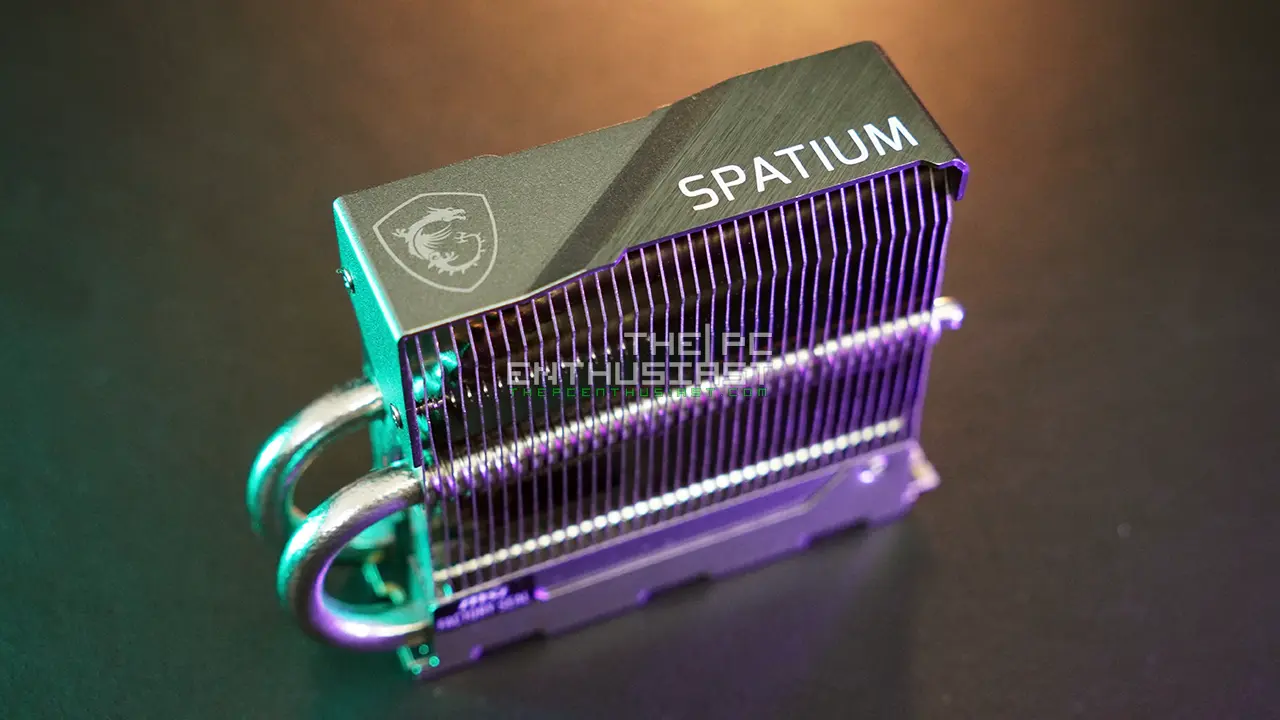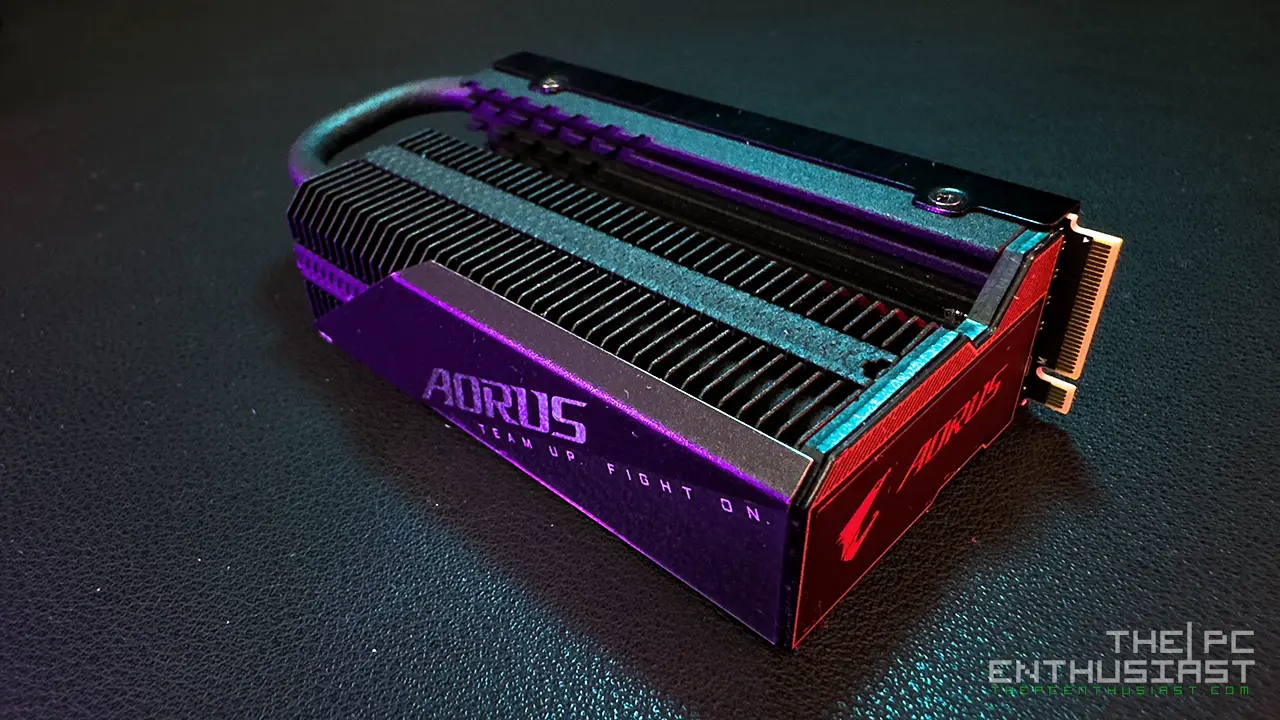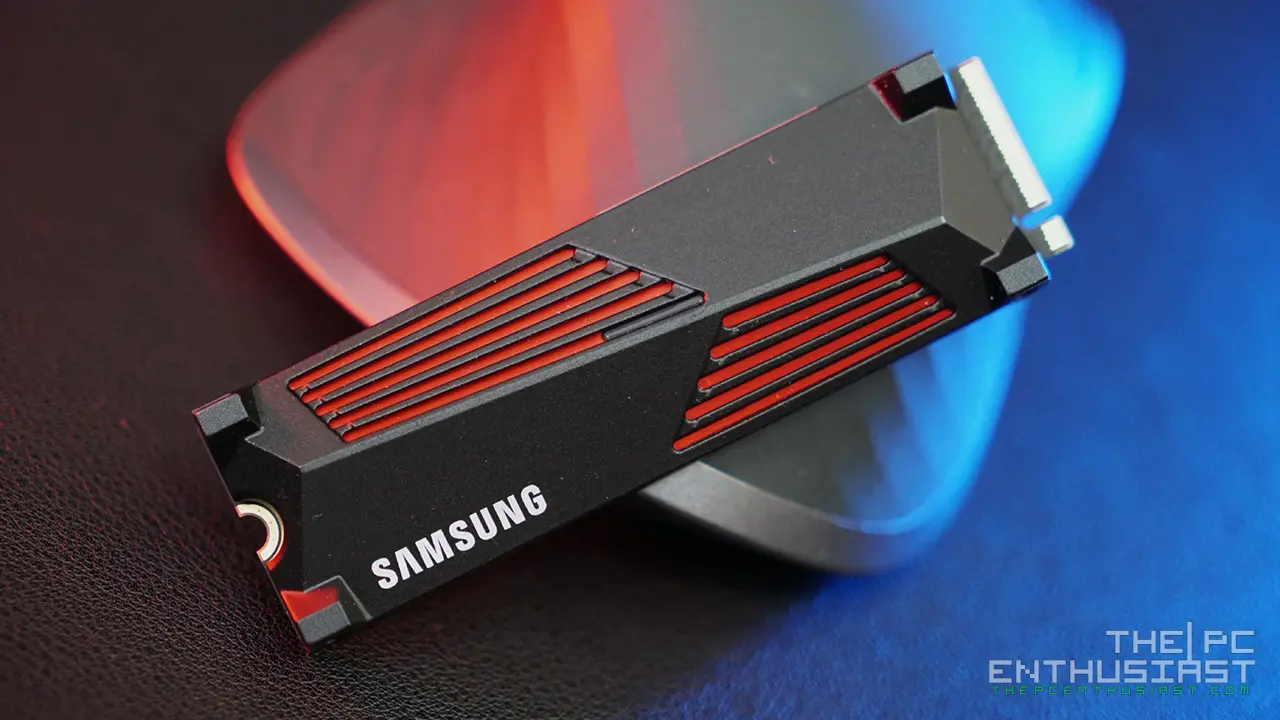Sabrent has updated their Rocket 4 Plus SSD series with Micron’s 176-layer 3D TLC NAND flash memory (B47R). The older version, that we reviewed before, uses Micron’s 96-layer 3D TLC NAND. Aside from a newer and better NAND flash, the latest versions of the Sabrent Rocket 4 Plus come with new firmware, R4PB47.2. The older variants came with an older firmware, RKT4P1.2. In this review, let’s find out how the new Sabrent Rocket 4 Plus with the upgraded 176L 3D NAND flash performs.

Sabrent Rocket 4 Plus (B47R 176-Layer 3D NAND) Gen4 2TB M.2 SSD Review
As of to date, the Rocket 4 Plus series is still Sabrent’s fastest NVMe Gen4 SSD in their product stack. They updated it with Micron’s 176-layer 3D NAND flash memory and new firmware. These changes offer a bit of performance increase. It’s not a huge performance increase, as you will see on the benchmarks below. But it is an improvement. The good thing here is that Sabrent replaced the NAND flash with better components. Unlike other SSD manufacturers who swapped the components with inferior components.
However, since the changes are subtle, I find it a bit confusing. The name of the product and their respective SKUs remain the same. It’s still called “Rocket 4 Plus” and the 2TB capacity still uses the same SB-RKT4P-2TB SKU. It gets more confusing since review sites are reporting slightly different sequential read and write speeds. But the sequential write speeds are slightly different on Sabrent’s page. On top of it, retail stores are still using the old specs, or read/write speeds on the product pages.
Perhaps, Sabrent should have at least changed the name and SKU of the product. Perhaps they should have named the new variants as Rocket 4 Plus EX/GT/Max, or Rocket 4 Max. At least it would be different. The retail packaging and the look of the SSD are similar as well. It would be difficult to tell whether you are getting the newer versions with the 176L NAND or the older 96L NAND. I would suggest buying from a retail store that restocks frequently.
Aside from the new NAND flash and firmware, the Sabrent Rocket 4 Plus uses a Phison PS5018-E18 controller. There’s no new controller yet at this point. Perhaps, we will see a new controller when Gen5 SSDs are released.
More Features
The Sabrent Rocket 4 Plus is PCIe 4.0 x4 and NVMe 1.3 compliant. It also features power management support for APST, ASPM, and L1.2. Aside from those, it also supports SMART and TRIM commands, as well as ONFi 2.3, ONFi 3.0, ONFi 3.2, and ONFi 4.0 interface.
Like most high-end and top-of-the-line NVMe SSD, the Rocket 4 Plus has an advanced wear-leveling feature; bad block management; error correction code, and over-provision. Its firmware is also upgradeable. Sabrent doesn’t have proprietary software for their SSDs. But all Sabrent SSDs come with free Sabrent Acronis True Image.
Sabrent also offers a couple of SSD utilities. They have the Sabrent Control Panel and Sector Size Converter (SSC). The software can be downloaded via Sabrent’s download page.
The Rocket 4 Plus is backward compatible with the PCIe 3.0 interface, but its speed will be limited to around 3,400MB/s sequential read and 3,000MB/s sequential write. There’s no point in buying a Gen4 SSDs if you’re only going to bottleneck its speed. If you don’t have a compatible system, Sabrent has several PCIe 3.0 NVMe M.2 SSDs that you can choose from.
Below are the rest of the specifications of the Rocket 4 Plus.
Sabrent Rocket 4 Plus Specifications
| 1TB | 2TB | 4TB | |
|---|---|---|---|
| Model | SB-RKT4P-1TB | SB-RKT4P-2TB | SB-RKT4P-4TB |
| Form Factor | M.2 2280 | M.2 2280 | M.2 2280 |
| Interface | PCI-Express 4.0 x4, NVMe 1.4 | PCI-Express 4.0 x4, NVMe 1.4 | PCI-Express 4.0 x4, NVMe 1.4 |
| Controller | Phison PS5018-E18 | Phison PS5018-E18 | Phison PS5018-E18 |
| Total Capacity | 1000GB | 2000GB | 4000GB |
| NAND | Micron 176-Layer 3D TLC B47R | Micron 176-Layer 3D TLC B47R | Micron 176-Layer 3D TLC B47R |
| External DDR Cache | DDR4 1GB SKHynix | DDR4 2GB SKHynix | DDR4 4GB SKHynix |
| Sequential Read speed | Up to 7,000 MB/s | Up to 7,000 MB/s | Up to 7,000 MB/s |
| Sequential Write speed | Up to 5,800 MB/s | Up to 6,850 MB/s | Up to 6,850 MB/s |
| Random Read IOPS | up to 800,000 | up to 1,000,000 | up to 1,000,000 |
| Random Write IOPS | up to 1,000,000 | up to 1,000,000 | up to 1,000,000 |
| Endurance | 700TB TBW | 1,400TB TBW | 3,000TB TBW |
| Warranty | 2 years (without reg.), 5 years (with reg.) | 2 years (without reg.), 5 years (with reg.) | 2 years (without reg.), 5 years (with reg.) |
For the latest pricing and availability: (#ad)
Rocket 4 Plus Gen4 M.2 SSD is available on Amazon.com here and Newegg.com here.
Packaging and Closer Look


The one that we have here is the Rocket 4 Plus NVMe SSD with PS5 heatsink. Sabrent’s Rocket 4 Plus SSD is fully compatible with the PS5 console, but it doesn’t have a built-in heatsink, unlike the Samsung 980 Pro HS variant. So, Sabrent is offering a kit that comes with a PS5 heatsink. You can also purchase the PS5 heatsink separately. Note that this heatsink is specifically designed for PS5 only. It won’t fit on your desktop motherboards.


This bundle has the Rocket 4 Plus packaged separately from the PS5 heatsink. The Rocket 4 Plus is housed inside a small black box. While the PS5 heatsink is housed inside the larger white box. Aside from the heatsink, Sabrent also included a screwdriver for the heatsink.


Above you can see the front and review views of the Sabrent Rocket 4 Plus Gen4 SSD. The top-front “label” is actually a copper heat spreader. Meanwhile, at the bottom is just a sticker label for additional information about the SSD.
As you can see from the side, the top portion is a thin copper heat spreader. It helps dissipate heat, but you’ll get better results if you use the included heatsink in your motherboard (if available) or with the PS5 heatsink for the console. No need to remove the top heat spreader. It would be difficult to put the copper heat spreader back since it would bend if you try to remove it.
Okay, time to see if Micron’s 176L 3D TLC would bring some improvement to the Rocket 4 Plus. Let’s see how it performs below.
The Test Setup
I tested the Sabrent Rocket 4 Plus (B47R 176L) 2TB capacity on an Intel Z690 system, powered by an Intel Core i7-12700K. The drive was installed on the first M.2 slot. It is the slot that is connected to the CPU, and the slot itself is located just below the CPU socket and right above the first PCIe x16 slot. Below are the rest of the system’s specifications:
| Operating System | Windows 10 Pro 64bit |
| Processor | Intel Core i7-12700K |
| Motherboard | Asus ROG Maximus Z690 Hero |
| Memory | Kingston Fury Beast DDR5 5200MHz 32GB |
| Graphics Card | MSI GeForce RTX 3080 Ti SUPRIM X |
Sabrent Rocket 4 Plus 2TB B47R 176L NAND Benchmark Results
AJA Benchmark Results

AJA System Test is a sequential test, and as you can see from the results above, the Rocket 4 Plus (B47R) is performing quite well. It’s on par and slightly faster with the other drives, like the Spatium M480 and Gammix S70 Blade. You can also see a bit of performance improvement from the older Rocket 4 Plus. Its performance increase isn’t really that huge, but it’s still an improvement.
AS SSD Benchmark Results


Using AS SSD benchmark, we can see a similar result to the AJA System Test. But this time, we can also see how these drives perform in random workloads. Again, the newer Rocket 4 Plus performed well and there’s a noticeable improvement in random workloads.
ATTO Disk Benchmark Results

ATTO Disk benchmark confirms how fast the Rocket 4 Plus is when it comes to sequential workload. By the way, the Spatium M480 is similar to the older variant of the Rocket 4 Plus. They have the same components: Phison E18, Micron 96L TLC NAND, etc. They are basically the same SSD, but with a slightly different configuration.
The XPG Gammix S70 Blade is different in the sense that it issues an Innogrit controller, instead of Phison E18. The Aorus Gen7 7000S is also the same Phison-based SSD underneath its heatsink. Again, it’s just the configuration that is different.
CrystalDiskMark Benchmark Results


In the CrystalDiskMark benchmark, the newer Sabrent Rocket 4 Plus (B47R) performed better overall. Although the performance improvement isn’t that significant in sequential workloads, we can see a substantial improvement in 4K random write workloads.
PCMark 10 Full System Drive Results

Finally, I tested the Rocket 4 Plus (B47R) using the PCMark 10 Full System drive benchmark suite. It is an intensive test and takes about an hour (or more) to finish. The test uses a wide-ranging set of real-world traces from popular applications (Adobe Creative Suite, Microsoft Office), and common tasks to fully test the performance of modern drives.
This result was a bit of a headscratcher for me. I was expecting to get a good result in this test. However, I didn’t get the result that I was expecting in this benchmark. To be more specific, its overall performance was just so-so in this test. I’m not sure why though. The Rocket 4 Plus is clearly faster than the Samsung 980 Pro, WD SN850, and XPG Atom 50 in the previous tests. But in this particular test, it only got an “average” result, sitting right there in the middle. Even the older Rocket 4 Plus got a slightly better score.
So, I think there’s something going on in this test. Perhaps I should retest these drives using a different system if I have the time in the future. Nevertheless, my conclusion about the newer Rocket 4 Plus wouldn’t be affected much by this result.
Pricing and Availability
The Sabrent Rocket 4 Plus NVMe Gen4 SSD series, with the Micron 176L NAND flash, is now available. It’s available in 1TB, 2TB, and 4TB capacities. Sabrent is also offering a 5-year limited warranty (with registration) for the said drive. For up-to-date pricing and availability, kindly check out the links below.
Rocket 4 Plus Gen4 M.2 SSD is available on Amazon.com here and Newegg.com here.
Sabrent Rocket 4 Plus NVMe SSD (B47R 176L NAND) Review Conclusion
Sabrent’s Rocket 4 Plus just got even better with Micron’s 176-layer 3D TLC NAND flash. I don’t have much to say actually. The Rocket 4 Plus is a tested and proven drive and it is one of the fastest drives on the market. Since it is a Phison-based SSD, I’m more or less positive that other manufacturers, with Phison-based drives, will have an updated variant soon.
Aside from being price competitive, the Rocket 4 Plus is compatible, not only with laptops and desktop PCs, but it’s also compatible with the PS5. Sabrent also offers a heatsink for motherboards that don’t have their own heatsink and a dedicated heatsink for PS5.
Just like in my previous review of the (older) Rocket 4 Plus variant, this is an excellent drive and it is one of the fastest drives out there. It even outperforms Samsung’s 980 Pro and WD SN850. Samsung used to be the leader when it comes to performance. But these days, it has been outperformed by the likes of Phison-based SSDs. Another thing is, SSD prices tend to fluctuate often. So be sure to check the latest prices. Either way, you simply can’t go wrong with Sabrent’s Rocket 4 Plus.









